Coring the bottom-
Let’s see if you can shout “Haps” after reading this journal. The Haps Corer is the instrument used by teams studying the bottom of the Chukchi Sea. Simply, it is a tube that is forced into the bottom and removes a cylinder of sediment, which is called a core. On Team BenthosThe bottom of a sea or lake, we use 2 different types of Haps Corer, a single and a 4-cylinder multi corer.
Cores of the bottom can be used for a many experiments including:
- what types of organisms live in the sediment and where in the sediment
- how many of each organism are living in the sediments
- if micro algae are producing oxygen
- what trace metals are in the sediments and quantity
- what isotopes and and quantity
- how much carbon there is
- other analysis such as nitrogen, methane, and other chemicals
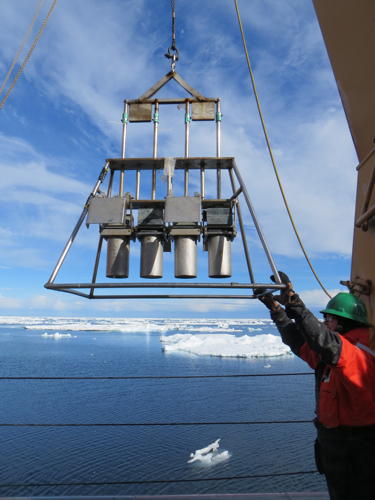
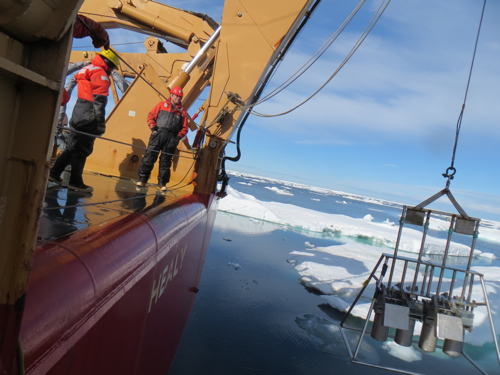
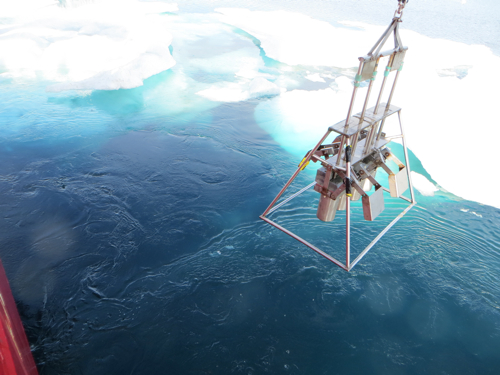
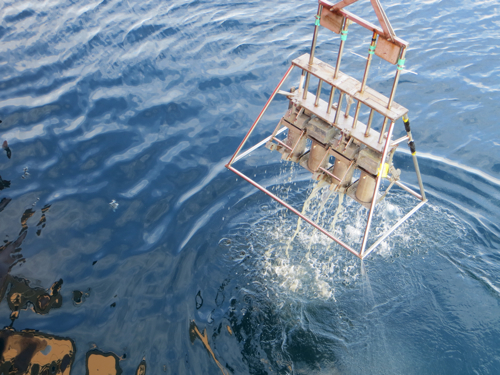
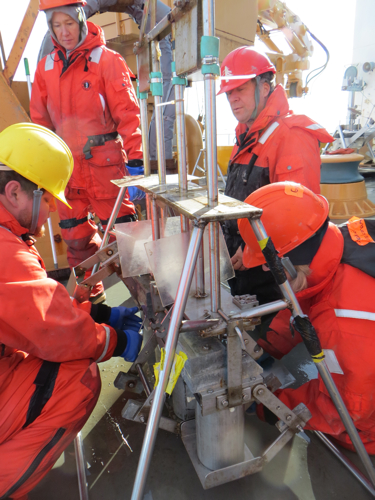
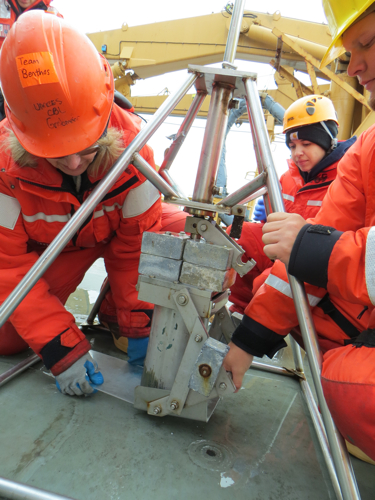
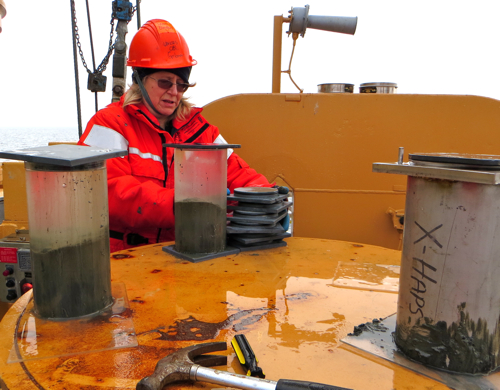
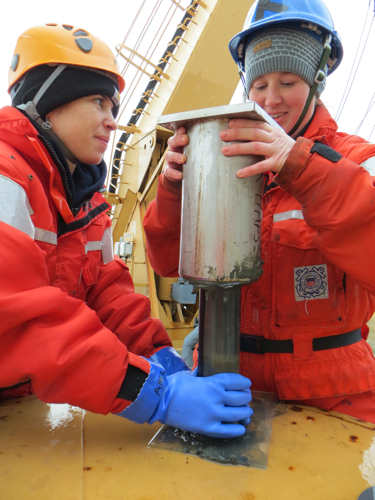
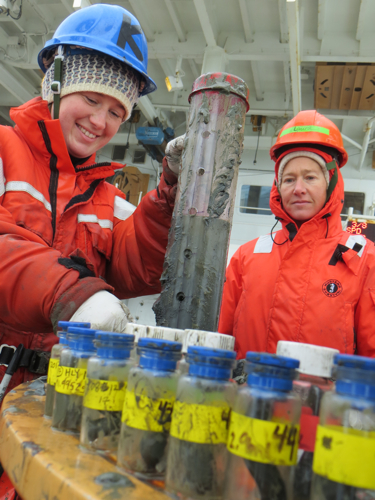
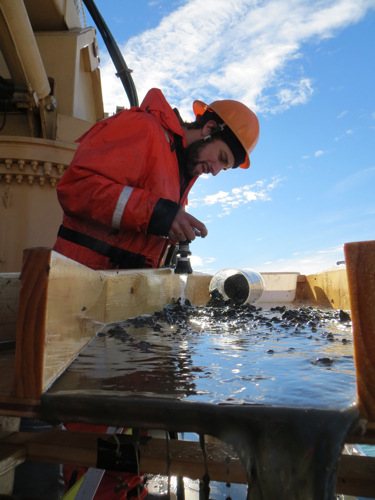
Kathleen Marshall, chemist
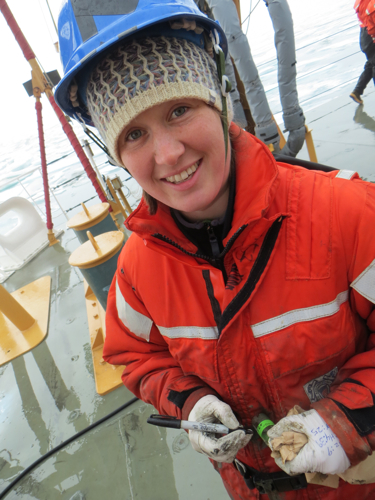
Kathleen Marshall works as a lab technician for Dr. Laura Lapham at the University of Maryland Center for Environmental Sciences Chesapeake Biological Lab where they investigate methane cycling. Methane is an important greenhouse gas. It forms from the breakdown of organic matter deposited in the seafloor from sediment microbes called methanogens. At very high pressures and cold temperatures, where the activity of methanogens is high, this methane gas can form a solid with water called gas hydrate. As temperatures increase, however, these hydrates may dissolve and release methane from the sediments into the water column and potentially the atmosphere. Very little work has been done to quantify how much methane escapes the sediments and reaches the surface waters. So, Kathleen is here collecting water and sediment samples to determine methane concentrations as well as methane transport between the sediments and water column in the Arctic Ocean..
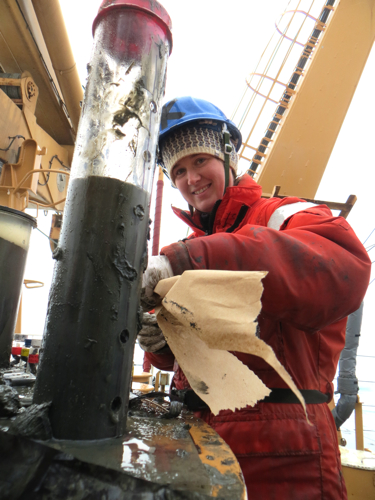
A final note and photo
Today, we began sampling after dinner as our scheduled was changed after another late station last night. The break was appreciated by all. I think everyone was able to wash clothes, take a nap, watch a polar bear eat, organize photos taken, clean the science labs...
Sometimes science just doesn’t work as planned. The photo below was taken when the Haps Corer was in heavy, sticky mud which caused the core to slip out. What do you think scientists do when things don’t work out? Send your answer to Ask the Team.
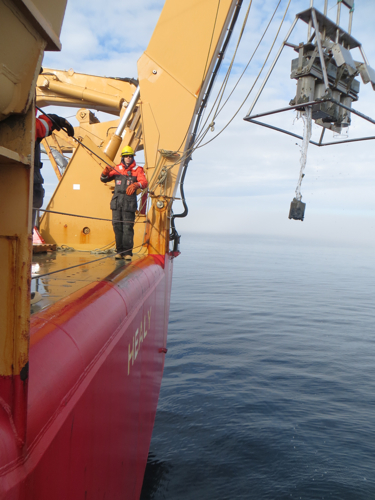
Haps! I think you now understand how a corer works.


Comments